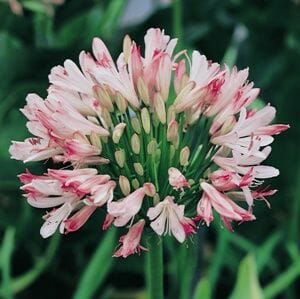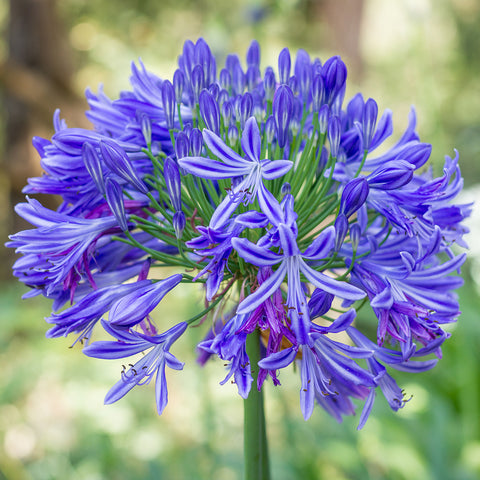Expanding Agapanthus: A Full Guide to Beautiful Blooms
Expanding Agapanthus: A Full Guide to Beautiful Blooms
Blog Article
Grasping the Art of Agapanthus Care: Important Steps for Healthy And Balanced Development and Lively Flowers
In the realm of cultivation, the farming of agapanthus stands as a satisfying endeavor for those that look for to nurture these classy blooming plants. With their striking blooms and graceful foliage, agapanthus has caught the attention of garden enthusiasts worldwide. Nevertheless, achieving optimum growth and lively blooms needs a nuanced approach that includes numerous vital steps. From selecting the right variety to grasping trimming methods, the journey in the direction of cultivating growing agapanthus plants is diverse and holds the key to opening the full capacity of these botanical treasures.

Selecting the Right Agapanthus Range

When selecting the appropriate Agapanthus range for your yard, take into consideration elements such as environment suitability, bloom shade, and growth behavior. Furthermore, take into consideration the climate in your region to make sure the Agapanthus variety you pick can flourish in your details conditions. Understanding the growth habit of various Agapanthus varieties is vital for proper positioning within your garden.
Suitable Growing Conditions
Taking into consideration the optimal environmental needs is important for effective Agapanthus cultivation. Agapanthus plants are sensitive to chilly temperature levels and should be safeguarded from frost throughout wintertime months.
To ensure healthy growth and vibrant blooms, plant Agapanthus bulbs at a depth of about 2-4 inches and space them 8-12 inches apart. Mulching around the base of the plants helps retain moisture and suppresses weed development.
Watering and Fertilizing Tips
Preserving appropriate wetness levels and offering vital nutrients are crucial elements in the care regimen for Agapanthus plants. It is crucial to strike an equilibrium when it comes to sprinkling Agapanthus. These plants prefer regularly damp soil but are vulnerable to root rot if overwatered. Throughout the expanding period, water deeply once a week, making sure the dirt is well-draining to prevent waterlogging. In hotter environments or throughout periods of dry spell, more frequent watering might be necessary to maintain the dirt uniformly moist. However, lower watering in the winter months to prevent water logged problems.
Fertilizing Agapanthus is important for advertising healthy and balanced growth and prolific blooms. Use a well balanced plant food, such as a 10-10-10 formula, in the very early spring as new growth emerges. Repeat this application every 6-8 weeks throughout the growing season. Avoid excessive fertilization, as it can result in rich foliage at the expenditure of flowers. Always comply with the producer's directions see this for correct dilution and application techniques. By adhering to these watering and fertilizing tips, you can ensure your Agapanthus plants flourish and create vibrant, long-lasting blooms.
Pruning Methods for Agapanthus
Pruning Agapanthus plants at the appropriate times and with appropriate methods is crucial for maintaining their health and promoting optimal development and blooming. The ideal time to prune Agapanthus is in late wintertime or very early springtime prior to brand-new development emerges.
Deadheading spent blossoms can additionally reroute the plant's power right into creating more blooms rather than establishing seeds. If you desire to gather seeds for proliferation, leave some flowers to fully grown and completely dry on the plant.
Keep in mind Bonuses to use clean, sharp devices to make exact cuts and minimize the risk of introducing conditions. Agapanthus. Routine pruning will certainly aid keep your Agapanthus looking neat and healthy and balanced while guaranteeing a bountiful display screen of attractive flowers
Handling Common Pests and Conditions
After guaranteeing correct pruning strategies for Agapanthus, it is vital to attend to common insects and conditions that can impact the wellness and vigor of these plants. One typical pest that impacts Agapanthus is the Agapanthus he has a good point gall midget.
Another common problem is fungal fallen leave spot, which provides as dark lesions on the fallen leaves. To stop fungal illness, make certain good air flow around the plants, stay clear of above watering, and get rid of any contaminated fallen leaves promptly. Furthermore, Agapanthus plants can struggle with origin rot if they are planted in badly draining pipes dirt. To prevent this, plant Agapanthus in well-draining soil and prevent overwatering. By being cautious and taking prompt action versus illness and bugs, you can aid your Agapanthus plants thrive and produce dynamic flowers.

Verdict
To conclude, grasping the art of agapanthus treatment entails picking the ideal range, supplying optimal planting conditions, proper watering and fertilizing, appropriate trimming methods, and dealing with common parasites and conditions. By complying with these vital steps, you can make certain healthy and balanced growth and vibrant blossoms for your agapanthus plants. Keep in mind to regularly check and keep your plants to promote their total wellness and longevity.
To make certain healthy and balanced development and lively blossoms, plant Agapanthus bulbs at a depth of concerning 2-4 inches and space them 8-12 inches apart. By adhering to these watering and fertilizing pointers, you can ensure your Agapanthus plants thrive and produce vibrant, lasting blossoms.
One common bug that influences Agapanthus is the Agapanthus gall midge. Furthermore, Agapanthus plants can experience from root rot if they are grown in badly draining pipes soil. By complying with these crucial steps, you can make sure healthy growth and vivid flowers for your agapanthus plants.
Report this page